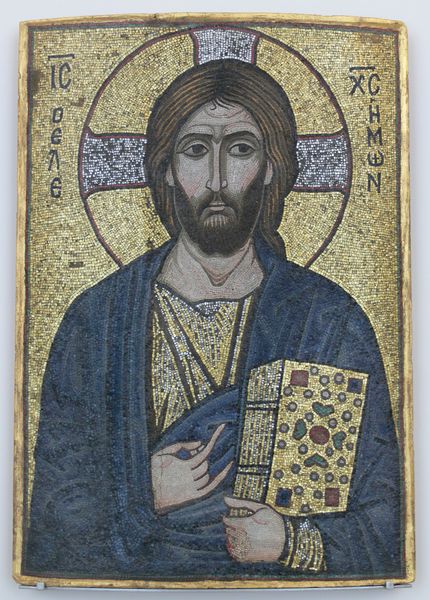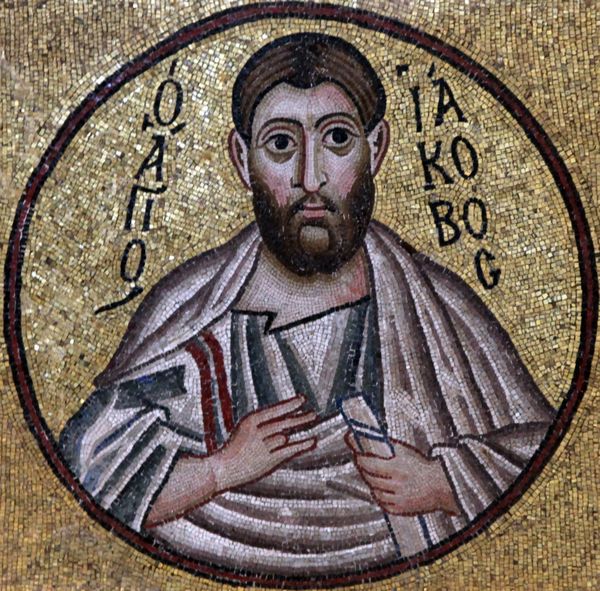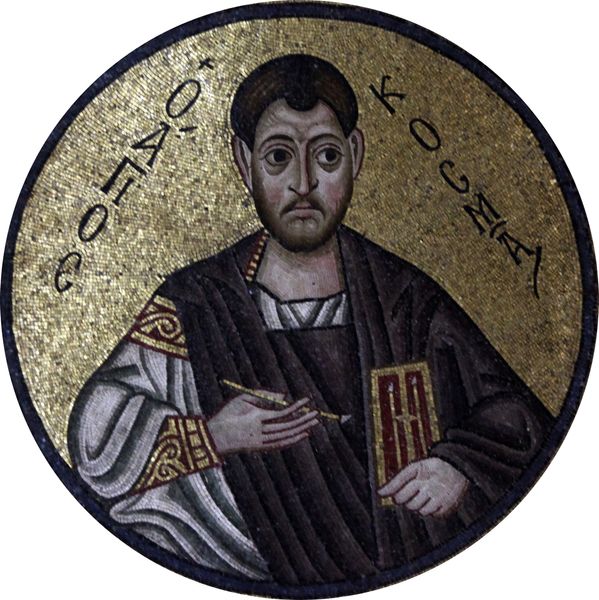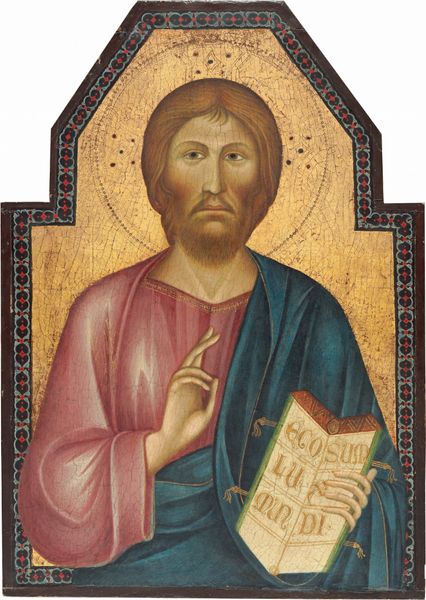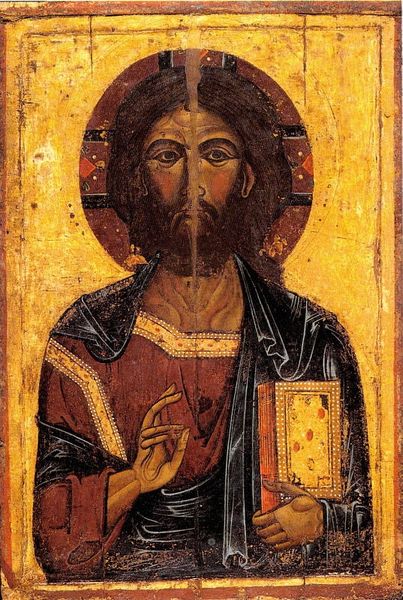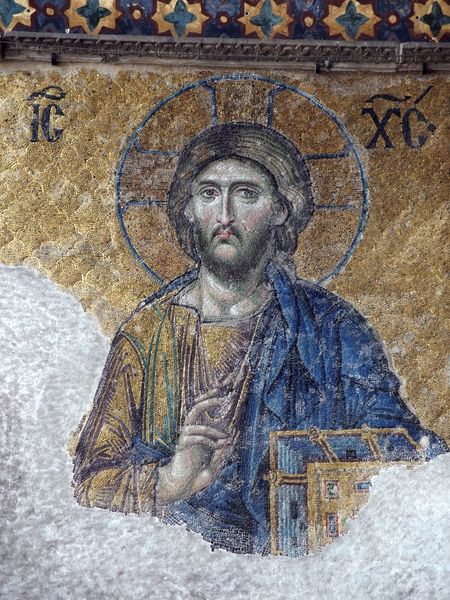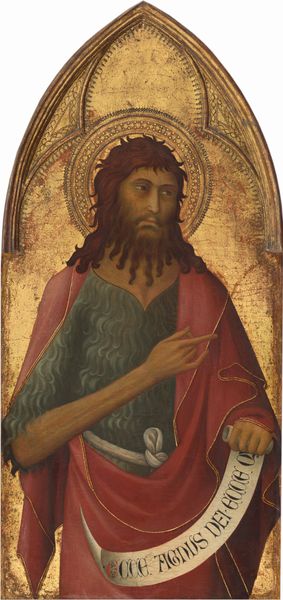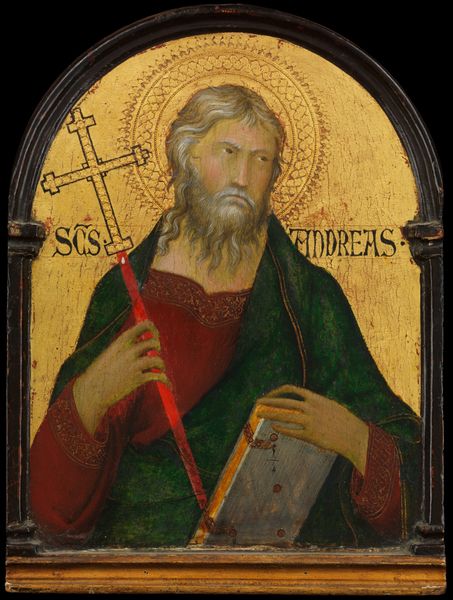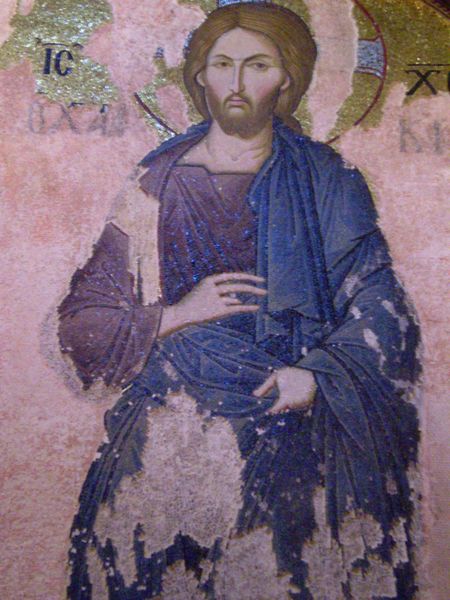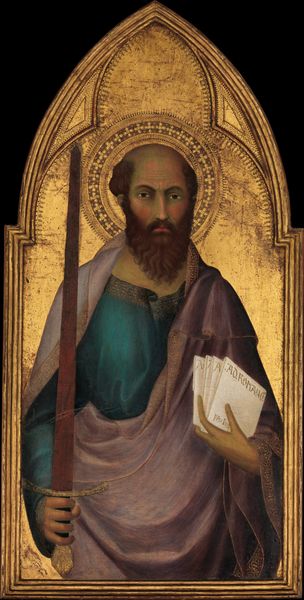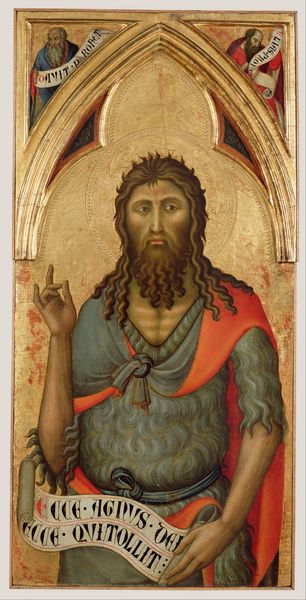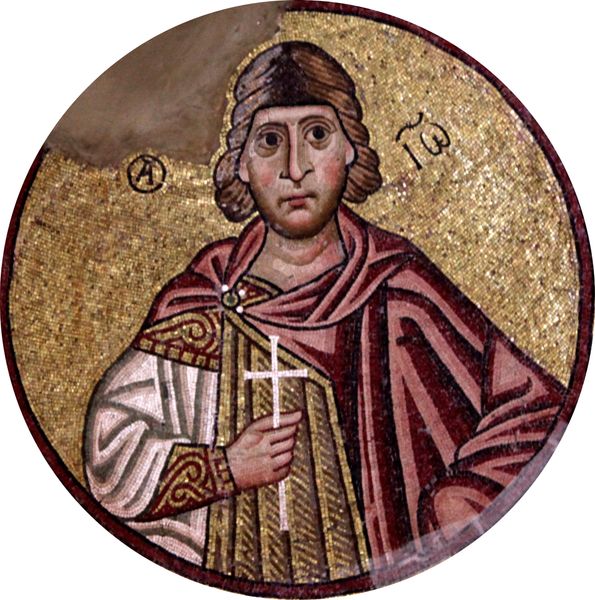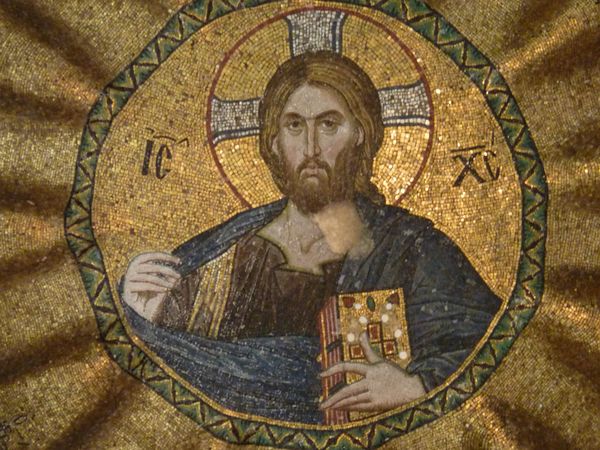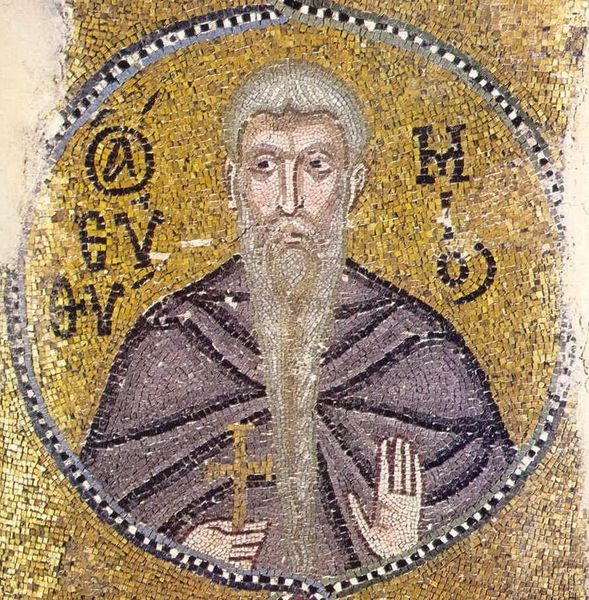
mosaic
#
portrait
#
mosaic
#
byzantine-art
#
medieval
#
prophet
#
strong focal point
#
framed image
#
portrait art
Copyright: Public domain
Editor: So, this is the mosaic "John the Baptist," dating back to 1025, found at the Hosios Loukas Monastery. There's such intensity in the face, but also a fragility. The small tesserae that form the whole image are beautiful. How would you interpret this piece within its historical context? Curator: Well, consider where this image was placed: Hosios Loukas, a monastery. This wasn't simply devotional imagery; it played a vital role in the monastery's claim to spiritual authority. Byzantine mosaics, with their gold backgrounds, weren't just decoration, but they were conveying the divine. Editor: How so? Was the depiction of John the Baptist political? Curator: Everything within these religious spaces was intensely political. John the Baptist, a pivotal figure, represents the bridge between the Old and New Testaments. By prominently displaying him, the monastery positioned itself within a sacred lineage. The mosaic’s style, that hieratic stillness, reinforced a sense of timeless power and theological legitimacy. Think about who controlled access to religious imagery and how this image would have shaped public understanding of religious authority at the time. Editor: That makes a lot of sense. So it's not just about faith but also about power dynamics in the Byzantine period. How accessible were images like this to ordinary people? Curator: Access was carefully managed. Monasteries like Hosios Loukas were pilgrimage sites, attracting visitors, but access to different parts of the complex would have been regulated. The image would’ve been seen, venerated, but always under the control of the monastic community. The carefully crafted image then, was deployed to reinforce not only devotion but social hierarchy. Editor: It’s fascinating how intertwined religious expression and power are. Thanks; I’ll never look at Byzantine art the same way! Curator: And I think thinking about those power structures helps us understand the very *purpose* of art in that time.
Comments
No comments
Be the first to comment and join the conversation on the ultimate creative platform.
